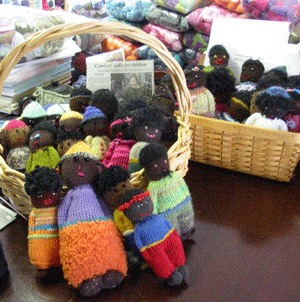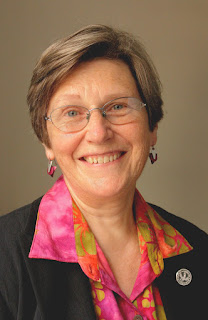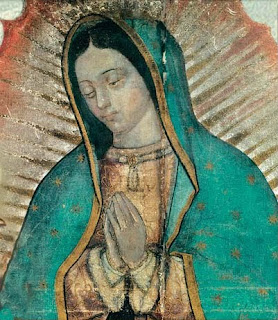 Today's sermon is based on John 12:1-8.
Today's sermon is based on John 12:1-8.
* * *
“Mary took a pound of costly perfume made of pure nard, anointed Jesus’ feet, and wiped them with her hair. The house was filled with the fragrance of the perfume.”
I did something extravagant on Thursday afternoon of this week, something I’ve dreamed about doing all winter long. I put my old pine rocker on the front porch.
And then I sat on my old pine rocker, and gazed out across the Ragged Mountains, and I basked in the wonderful warmth and sweet, sweet aroma of the afternoon, and I didn’t do any work at all, and no rich man could have been more extravagant than I.
Today we hear of the extravagance of Mary, and the nard she uses to anoint Jesus’ feet before his death. Let me tell you something about nard, or spikenard as it is also called. Spikenard is an herb that grows to be about 10 feet tall in northern India, in the deep woods at the foot of the Himalayas.

In the time of Jesus, a rich yellow oil was painstakingly
extracted from the spikenard plant and placed in alabaster boxes, then carefully transported by caravan through India and Persia and across the long flat desert of what is now Iraq and Jordan before it finally reached the markets of Jerusalem.
The oil of spikenard was much sought by kings and wealthy Romans throughout the ancient Mediterranean world. The oil is said to cure migraines and bring calm to those who inhale its aroma.
Nard oil has a sweet fragrance similar to sandalwood, and, in fact, nard is one of the ingredients in sandalwood incense.
As you can well imagine, the oil of spikenard is expensive. As we just heard, it cost Mary 300 denari for one pound of nard oil. Let me translate that for you: it took a common laborer one day to earn one denari – so it cost nearly one year’s wages to purchase that pound of nard oil.
In our day, spikenard is still costly – a pound now runs about $480. There are many places on this globe today where that would be one year’s wages.
With that in mind, we hear of Mary’s shocking extravagance in John’s gospel. In the story, Jesus comes to Bethany to see Mary and Martha, and their brother Lazarus, for what they all surely know is their farewell in the final hours before his death.
After this sad meal, Mary brings out this incredibly expense, wonderfully aromatic oil, and she anoints Jesus’ feet, and then wipes his feet with her hair. Mary lovingly prepares Jesus for his death.
Jesus, who ministered to so many, who raised her brother Lazarus from the dead, who fed the 5,000, who cured the sick and made the lame walk, who gave living water to the Samaritan woman, and who made the blind see – Jesus allows himself, finally, this one time, to be ministered to with expensive nard oil.
There is another reference to spikenard oil in the Bible – in the Song of Solomon, this great ode to human love. Perhaps Jesus thanks Mary with this verse from the Song of Solomon:
“How sweet is your love, my sister … how much better your love than wine, and the fragrance of your oils than any spice!”
The love of Jesus in these final hours fills the room like perfume, and those who are in this room embrace his love and hold it in their hearts through the crushing crisis that is about to come. And Mary returns his love by preparing him with the oil of kings.
Lest we forget, Judas is in that room, too. And the chain of events that is about to unfold will take Judas to a terrible end. But for now Judas asks a question, and it is not an unreasonable question:
“Why was this perfume not sold…and the money given to the poor?”
Why, Judas asks, is this extravagant oil being used to wipe the feet of Jesus? Couldn’t this money be better spent on the poor?
The gospel writer whispers to us that Judas is a thief and has no intention of spending the money on the poor. But that doesn’t really answer the question, and still the question lingers in the room at Bethany, and lingers in the air down through the ages to us:
Couldn’t that money be better spent on the poor?
“Leave her alone,” Jesus replies. “She bought it so that she might keep it for the day of my burial. You always have the poor with you, but you do not always have me.”
When I hear these lines, I think of all of the loving hands of those who have prepared this space for worship Sunday after Sunday, year after year.
I think of the hands that have pressed the linens, and polished the silver used in our Holy Communion; and those who have baked the bread, filled the cruets with wine, and arranged the flowers that will soon adorn this sacred space at Easter.
And I think of those who clean up after the rest of us have gone for the day.
The poor are with us and there is much work for all of us. Today, though, Jesus reminds us there is love in this room, and he bids us to linger awhile because precisely because the poor are with us, and precisely because we have work to do tomorrow.
The poor are with us, and I want to tell you something of that today. In my nearly two years in Charlottesville, I have been struck by a population that remains largely invisible here: Latino immigrants.
They live in apartment buildings behind shopping centers, and in other out-of-the-way neighborhoods.
Many work in poorly-paid service jobs, and with limited English abilities, they are at a disadvantage when maneuvering through the legal, health and education systems, and that disadvantage that can become a cruel spiral leading to deeper poverty and isolation.
There is a serious shortage of translation services in Charlottesville, and it is not something most of us English-speakers think much about.
We are not talking about a huge government program.
We are not talking about huge handouts.
We are talking about providing a few translators in key places so that some poor people might have a chance in the labyrinth of our society.
IMPACT, a coalition of 33 congregations – Jews, Muslims, and Christians including St. Paul's – wants to do something about that issue this year. We may not agree on many things, but we can agree on this.
On top of that, the cornerstone issue from last year -- early childhood education -- remains on the burner. It all fits together.
Tomorrow evening we will gather at University Hall to hear proposals for solving these issues, and hear the reaction from public officials. Our strength is in our passion as people of faith, and our passion shows when we come together in unity with large numbers.
So, tomorrow evening, please come to University Hall. If you can give do something as simple as giving two hours of your time, you can change the lives of people who need to be heard.
Tomorrow we have work to do. Today, linger here awhile; Jesus is filling us with life and love, and the strength to leave this room to feed each other, and to feed the poor in body, mind and spirit.
So today, linger awhile. Be extravagant in your love for the living Christ dwelling with us, and be extravagant in your love for each other. Worship fully, pray earnestly, sing loudly, give generously, and share in the bread and wine of our Holy Communion.
Today, may each of us be strengthened and fed. The poor are with us; tomorrow there is work to be done. AMEN
 Tuesday in Holy Week feels like the lull before the storm. Palm Sunday is behind us, but the Great Three Days is not yet here. Perhaps my chief accomplishment of the day was cleaning up the Paschal Candle and attaching the "2010" gold lettering to it. It will be lit next on Saturday evening at the Great Vigil of Easter.
Tuesday in Holy Week feels like the lull before the storm. Palm Sunday is behind us, but the Great Three Days is not yet here. Perhaps my chief accomplishment of the day was cleaning up the Paschal Candle and attaching the "2010" gold lettering to it. It will be lit next on Saturday evening at the Great Vigil of Easter.

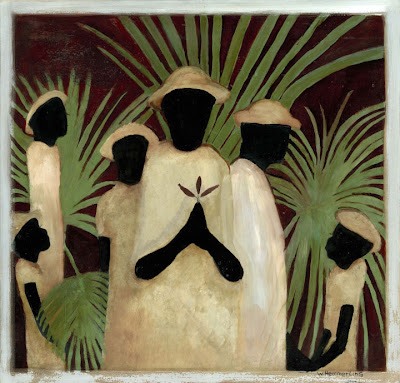




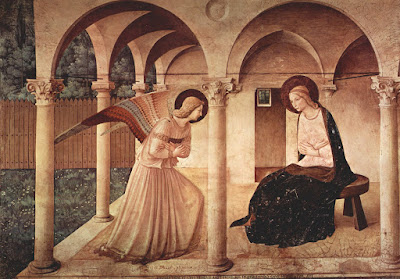



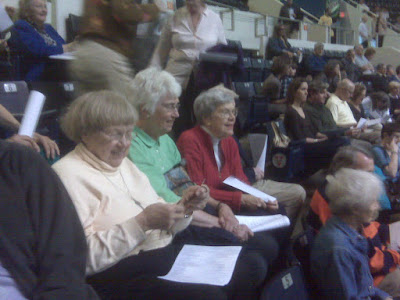
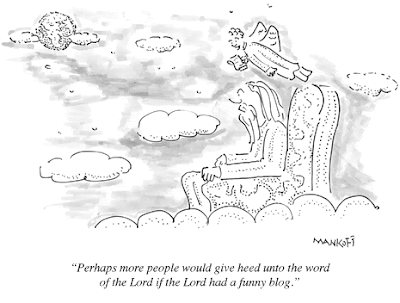
 In the time of Jesus, a rich yellow oil was painstakingly
In the time of Jesus, a rich yellow oil was painstakingly